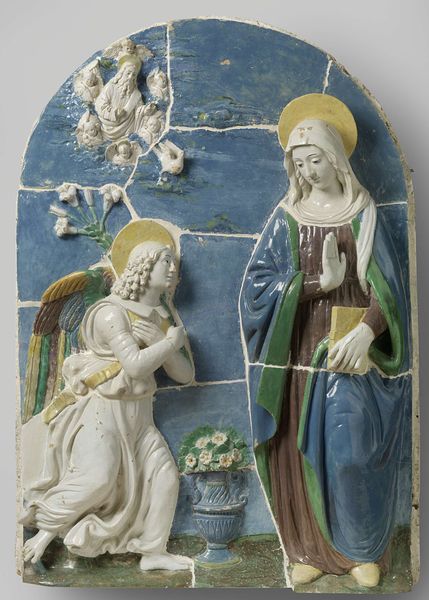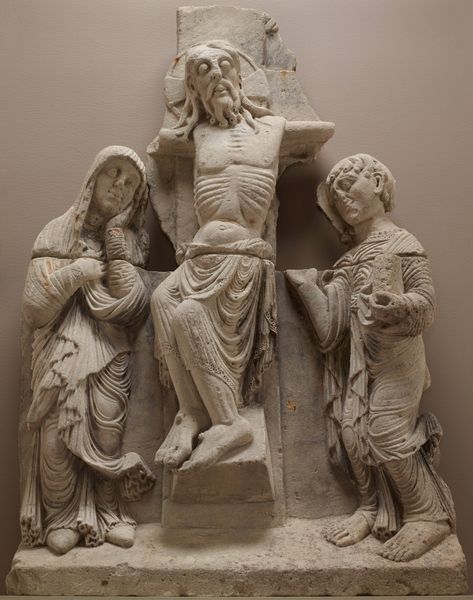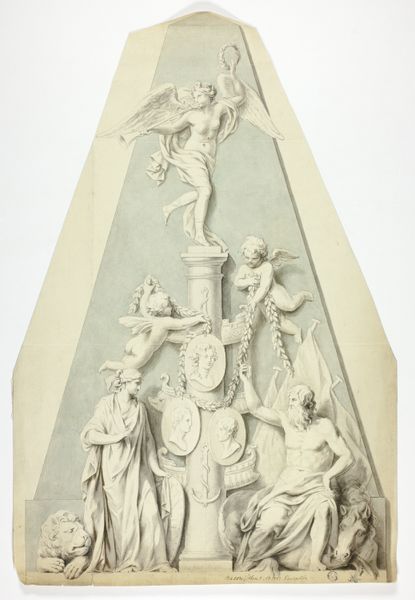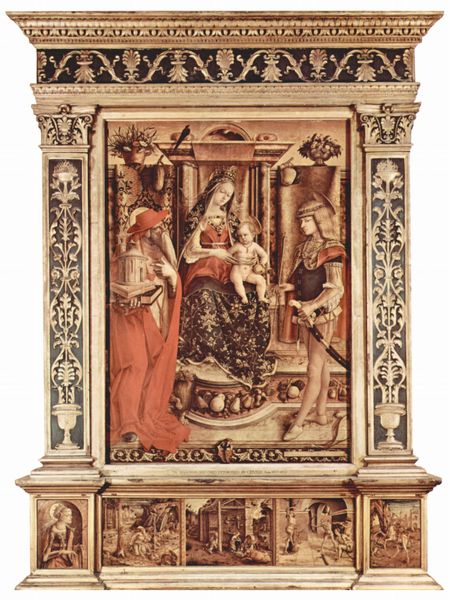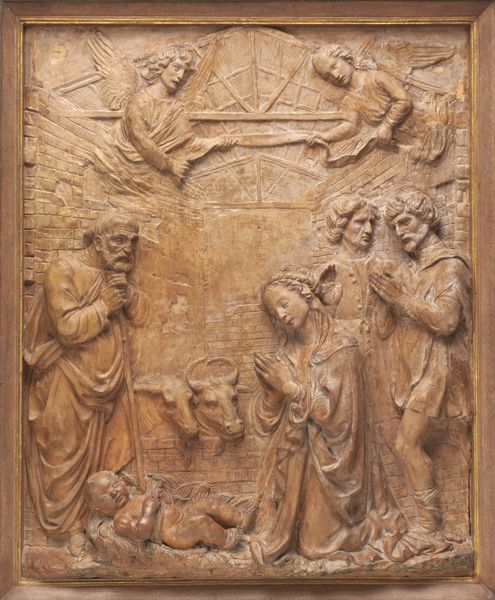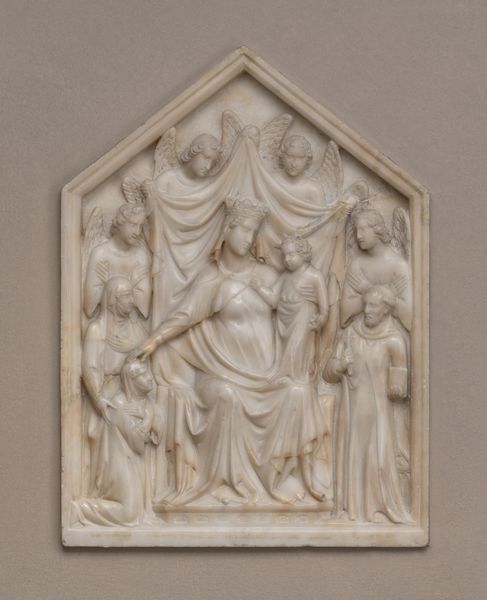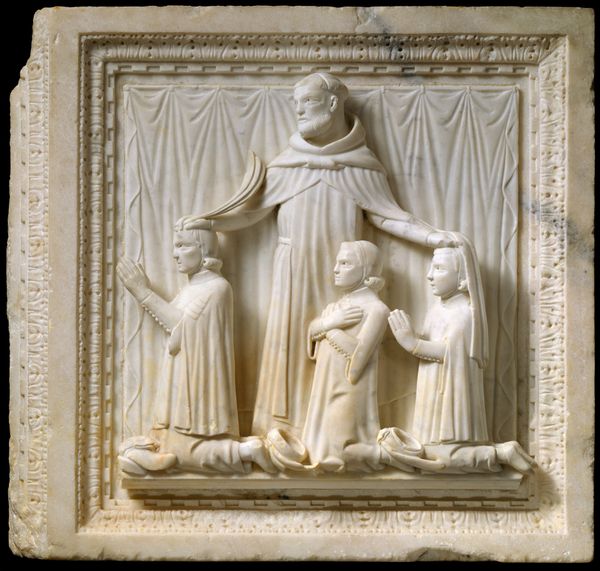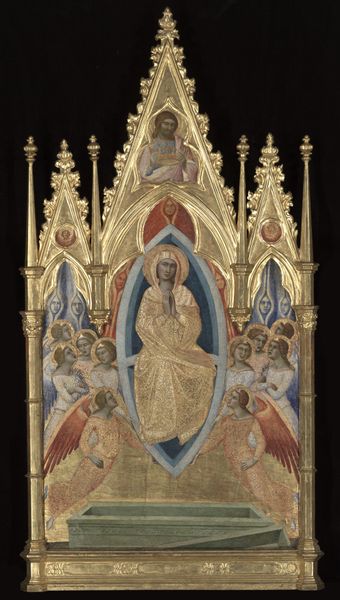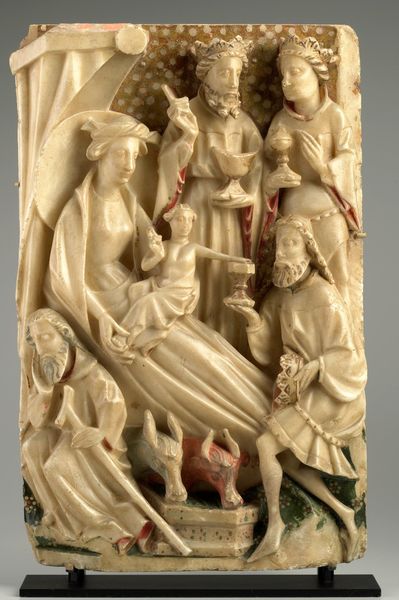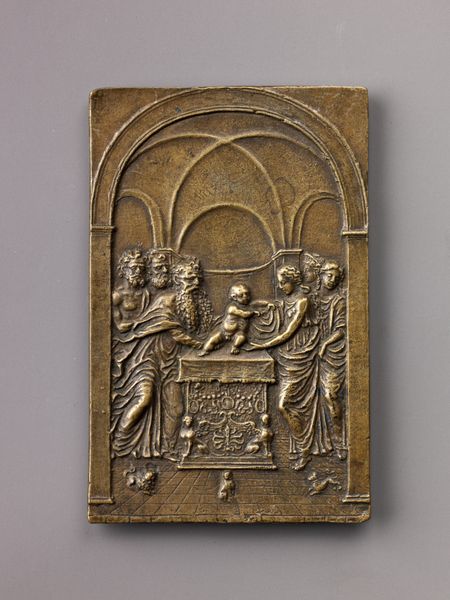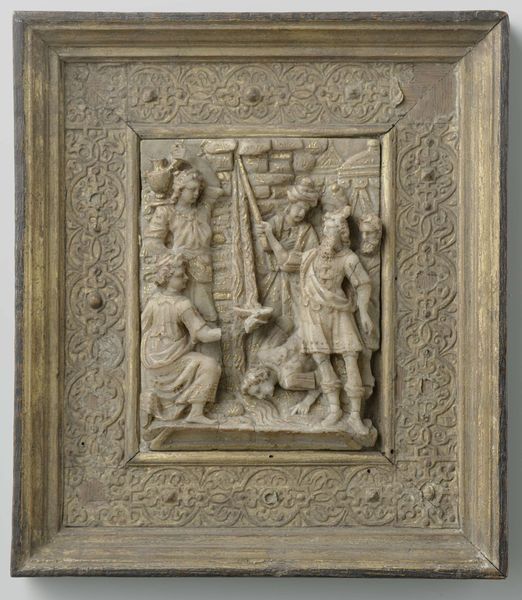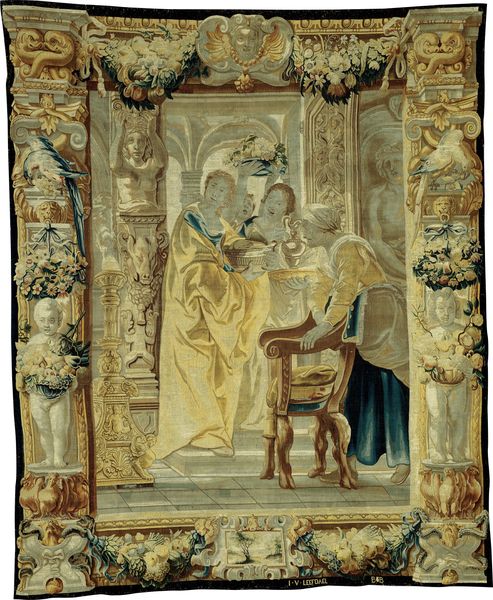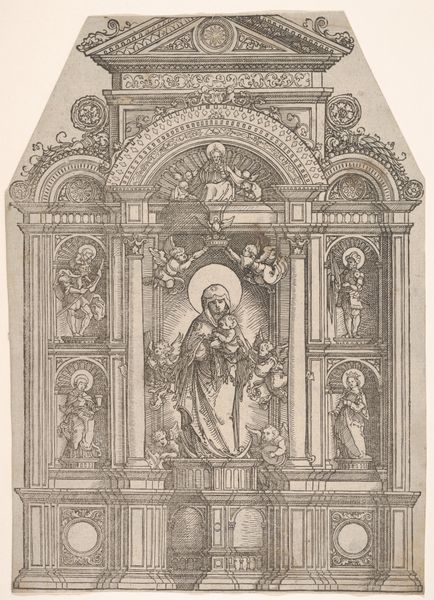
Altarpiece with the Virgin and Child Enthroned between Saint Jerome and Saint Nicholas of Myra 1502
0:00
0:00
tempera, relief, ceramic, sculpture, terracotta
#
portrait
#
decorative element
#
medieval
#
muted colour palette
#
tempera
#
relief
#
decorative
#
ceramic
#
figuration
#
traditional architecture
#
sculpture
#
terracotta
#
italian-renaissance
Dimensions: height 226 cm, width 172 cm
Copyright: Rijks Museum: Open Domain
Editor: So this is Benedetto Buglioni's "Altarpiece with the Virgin and Child Enthroned between Saint Jerome and Saint Nicholas of Myra," created in 1502, using terracotta and tempera. I'm immediately struck by the use of ceramic – it gives the figures a smooth, almost ethereal quality. The color palette also feels intentionally muted. What catches your eye in this piece? Curator: The persistence of specific iconographic elements is what fascinates me here. Notice, for instance, the placement of the figures and their attributes. St. Jerome with his lion representing the strength and solitude sought in scripture, versus St. Nicholas of Myra bearing a bishop’s staff, signaling authority and earthly service. How do these figures play into the viewer's understanding of the Virgin Mary at the center? Editor: It almost feels like they're framing her, giving her importance by association, especially with the inscription at the base— do you think it guides how the people would perceive them? Curator: Indeed. Inscriptions during the Renaissance weren’t merely labels; they were pronouncements. This particular inscription highlights the donation from a nun, Caterina, embedding both personal piety and familial legacy within the artwork. And the very deliberate architecture of the piece also adds to that emphasis. The symbols worked as an affirmation of personal identity but also served as historical memory-markers. Does knowing the dedication shift your impression of the work's purpose? Editor: Absolutely, the altarpiece now seems like more than a devotional piece. It's also a monument, a form of self-expression and documentation. Curator: Precisely. And so the altarpiece continues its silent storytelling, echoing beliefs and ambitions across time.
Comments
rijksmuseum about 2 years ago
⋮
This altarpiece was made in the then modern Renaissance style. The form and motifs of the mouldings derive from Classical Roman architecture. The material was also modern: tin-glazed earthenware. The inscription translates as: ‘Sister Catherine, daughter of Tomaso di Salvestro, Nuccarello’s son, had this altarpiece made in the year 1502’. It comes from the church of Sant’Antonio Abate in Cortona (Italy).
Join the conversation
Join millions of artists and users on Artera today and experience the ultimate creative platform.
